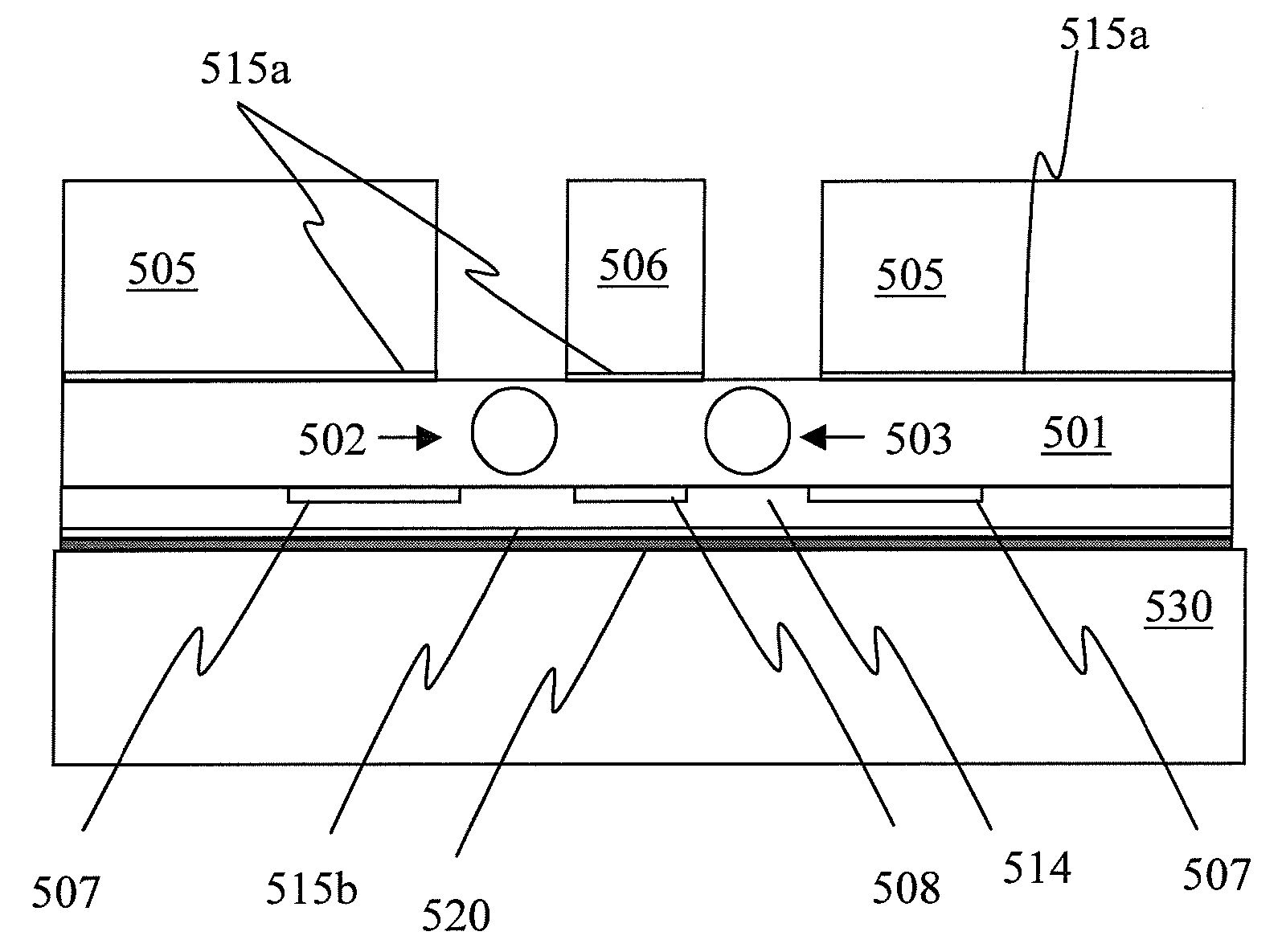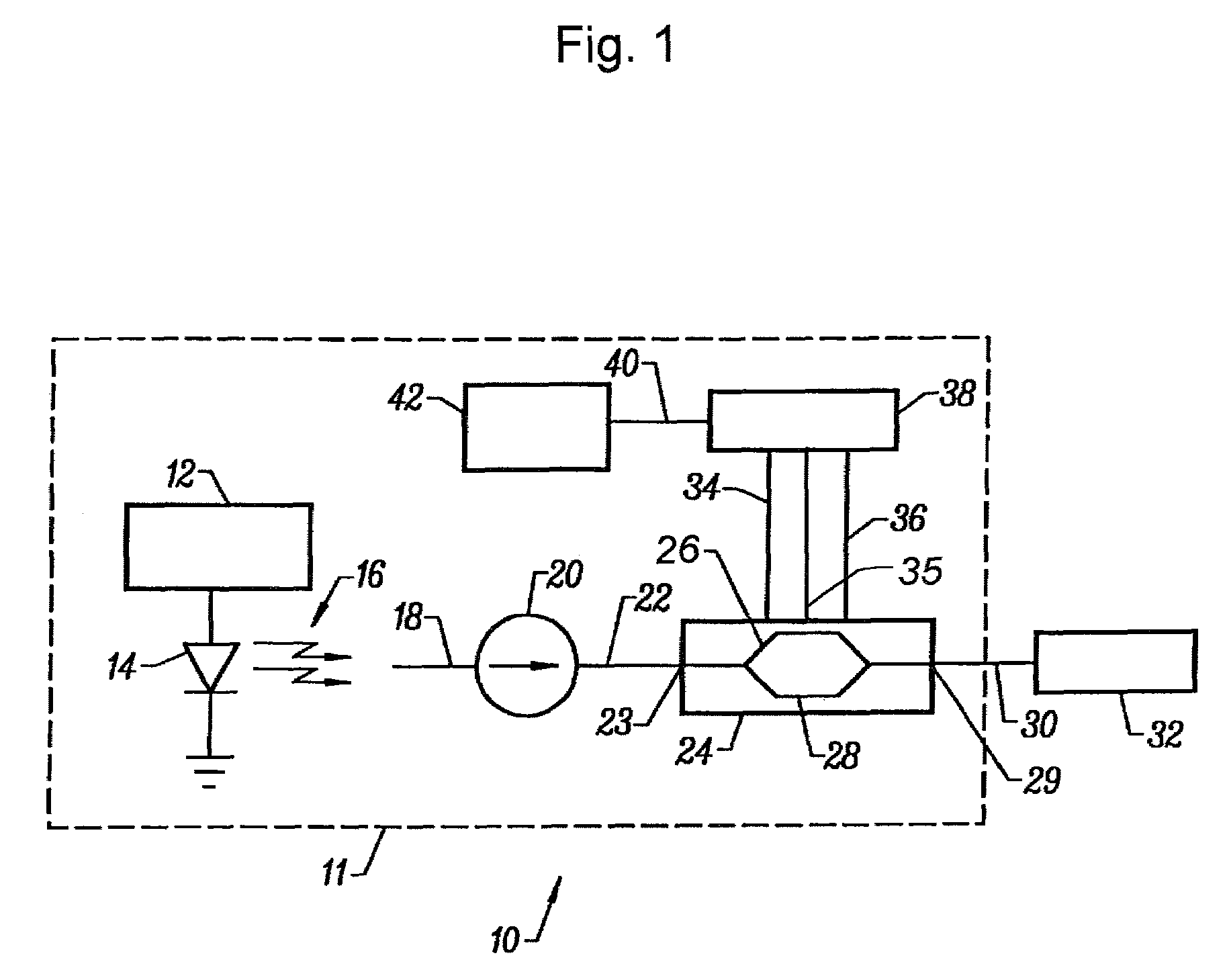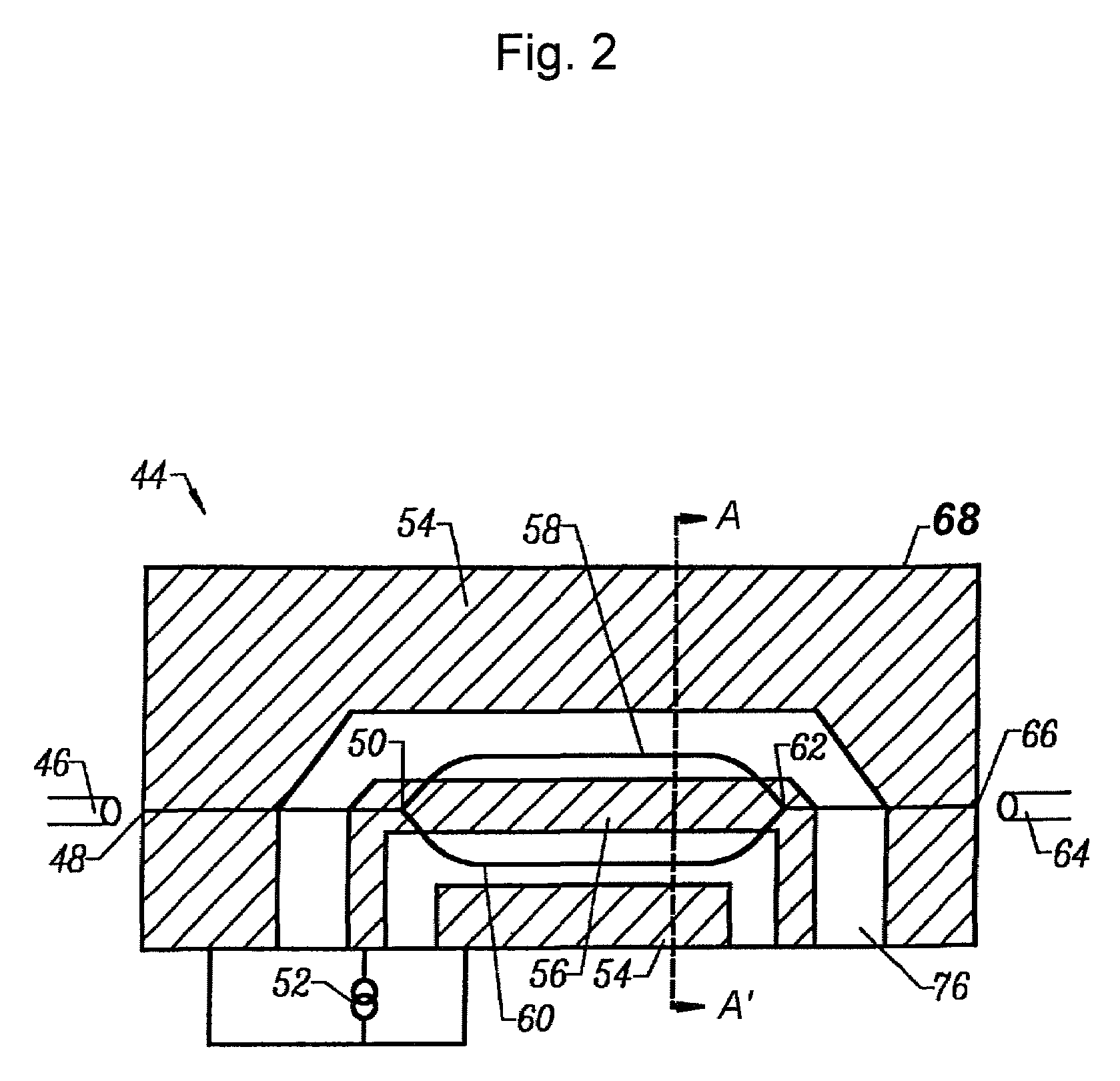Electro-optic device
a technology of optical devices and optical components, applied in non-linear optics, instruments, optics, etc., can solve problems such as weak electric fields, loss of transmitted data, etc., and achieve the effect of optimal modulation efficiency
- Summary
- Abstract
- Description
- Claims
- Application Information
AI Technical Summary
Benefits of technology
Problems solved by technology
Method used
Image
Examples
Embodiment Construction
[0083]With reference to FIG. 1, an embodiment of a simplified optical communication system 10 is shown, utilizing a modulator 24 of the present invention. The optical communication system 10 comprises a transmitter 11, a receiver 32 and a transmission medium 30, which connects the transmitter 11 to the receiver 32. The transmission medium 30 is typically an optical fiber.
[0084]The transmitter 11 includes a laser 14, which operates in accordance with laser control signals received from a laser controller 12. The laser 14, which may operate in continuous wave (CW) mode or pulsed mode, produces optical signals 16 having a prescribed wavelength. In long wavelength communications systems, the laser 14 is typically an InGaAsP / InP semiconductor single-mode laser which generates 1.5 micrometer wavelength optical signals.
[0085]A lensed optical fiber 18, or fiber pigtail, receives the optical signals 16. The lensed optical fiber 18 is coupled to the isolator 20, which reduces reflections dire...
PUM
| Property | Measurement | Unit |
|---|---|---|
| thickness | aaaaa | aaaaa |
| thick | aaaaa | aaaaa |
| length | aaaaa | aaaaa |
Abstract
Description
Claims
Application Information
 Login to View More
Login to View More - R&D
- Intellectual Property
- Life Sciences
- Materials
- Tech Scout
- Unparalleled Data Quality
- Higher Quality Content
- 60% Fewer Hallucinations
Browse by: Latest US Patents, China's latest patents, Technical Efficacy Thesaurus, Application Domain, Technology Topic, Popular Technical Reports.
© 2025 PatSnap. All rights reserved.Legal|Privacy policy|Modern Slavery Act Transparency Statement|Sitemap|About US| Contact US: help@patsnap.com



